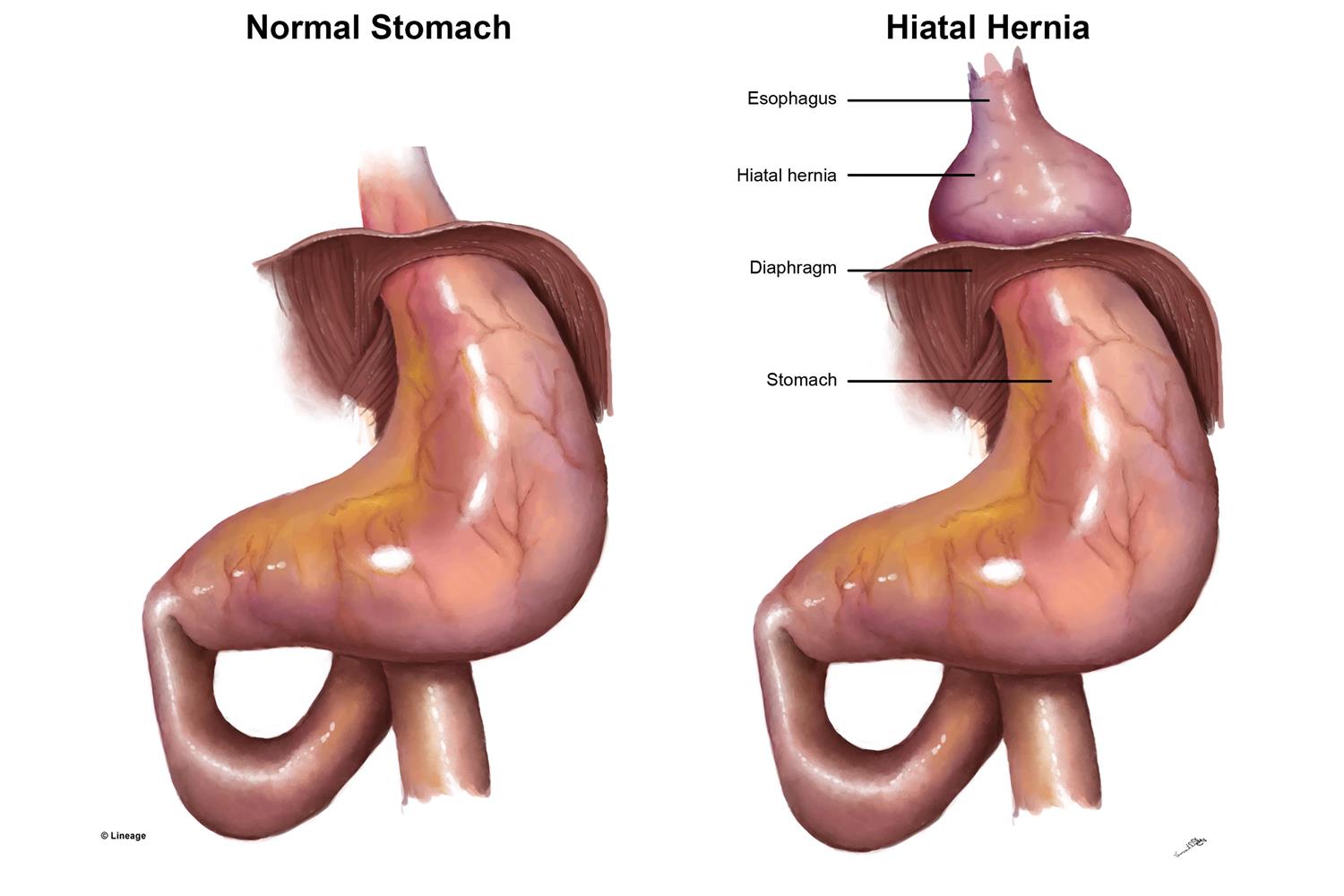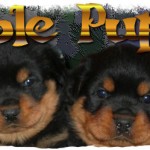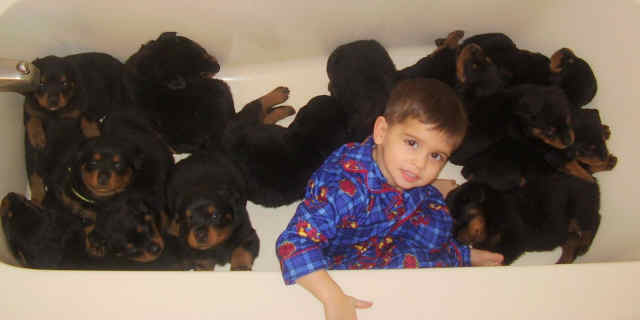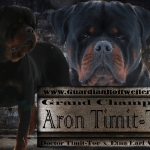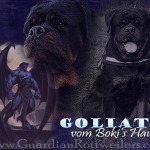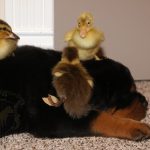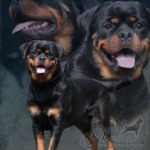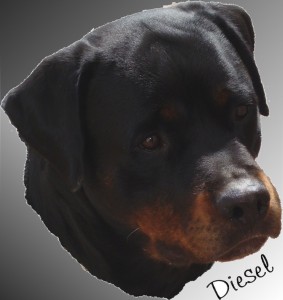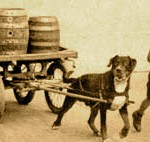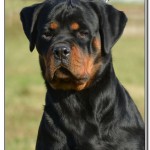Hernias
A dog’s body/system is not so dissimilar to our. Almost any physical affliction we can suffer from, they can as well- from simple things like ear infections and dry skin to just about everything that affects the cardiovascular system, reproductive system, respiratory system, endocrine system, etc. Dogs can get diabetes, cardiovascular diseases, and unfortunately, even cancer. Hernias are no exception.
What is a hernia?
A hernia develops when part of the fatty tissue or even part of an organ protrudes through a weak spot or tear in the surrounding muscle or connective tissue. Although completely treatable, depending on the location or severity of the hernia, they can become life-threatening. There are 5 common types of hernias in canines.
Umbilical Hernia
Umbilical hernias are the most common in dogs and most of the time seen in puppies. An umbilical hernia can be caused by a mother that is too aggressive with cord removal and/or will not leave the umbilical area alone after whelp. Umbilical hernias can also be caused by failure of the puppy’s umbilical ring or abdomen to close correctly. An umbilical hernia (essentially, an outie belly button) will be a soft protruding area where the umbilical cord was connected that is squishy. A small, reducible umbilical hernia will usually correct spontaneously (on its own) and will not require any surgical intervention. However, if it has not gone away by the time the dog is old enough to spay/neuter, it should be fixed at that time.
Although I always try to let a mom do as much as possible including cleaning and stimulating, consuming the placenta, etc., I have learned long ago to try to intervene when it comes to the umbilical cord. I keep a pair of blunt scissors (you do not want them super sharp as you want to crimp the cord as you cut it) in hand as mom pushes the baby out and try to quickly clip the cord before mom gets to start yanking on it. I have also found that some moms will not leave the cord alone after the pups are born if it is too long or if there are strings dangling where it has been tied off (when necessary). This can be helped some by trimming the cord shorter (I only leave about 1/4″ if mom wants to fuss with it) as well as ensure there are no strands of the umbilical cord, or the dental floss used to tie it off that are longer than the rest of the cord. Our policy here at Guardian Rottweilers is to take shifts and sit with our moms and newborn pups at all times. This allows us to be a helpmate to mom- collect the pups that wonder off for her, so she does not have to stress over it, and to ensure all of mom’s needs are met. This also allows us to get to know each puppy intimately so that we can spot downward trends even before clinical symptoms present. It allows us the unique opportunity to be more readily aware of potential bad habits like a mom fussing over a cord. Although implementing new trimming techniques and being observant and intervening when necessary has helped diminish the number of umbilical hernias we get significantly, we still have an occasional mom who gets to her newborn cord before we do or pulls on a cord of one pup while we are doing weights/meds/check-ups on another pup.
When we do get the occasional umbilical hernia, we take the decision under advisement with Dr. Udrasols on whether we will repair the cord (surgically) immediately or give it a chance to repair on its own. There are important considerations for both decisions. Leaving the umbilical hernia on a pup that is sent home with a customer shifts the burden of responsibility to the new owner. Of course, there will be many other great responsibilities for the new owner that come with having guardianship over a new family member (continued veterinary care throughout the life of the puppy, nutrition, training, etc.), it still weighs on me knowing that I will no longer be the one continuing to monitor. Opting to go ahead and repair the hernia does remove that burden to be aware of the hernia, however, no surgery is without risks. Anytime a living creature is put under anesthesia, there are a myriad of potential complications. Anytime a less invasive option for treatment can be used, it should always be sought out. I use this philosophy in my 2-legged kids as well as my 4-legged babies. If it is a pup we will be retaining for our own breeding program, I will always opt to leave the hernia to repair on its own provided it is not a complicated hernia and reducible as a vast majority of the time, it will indeed heal itself. However, in pups we send home, the decision to intervene or leave it be will be a case-by-case basis after counseling with our veterinarian.
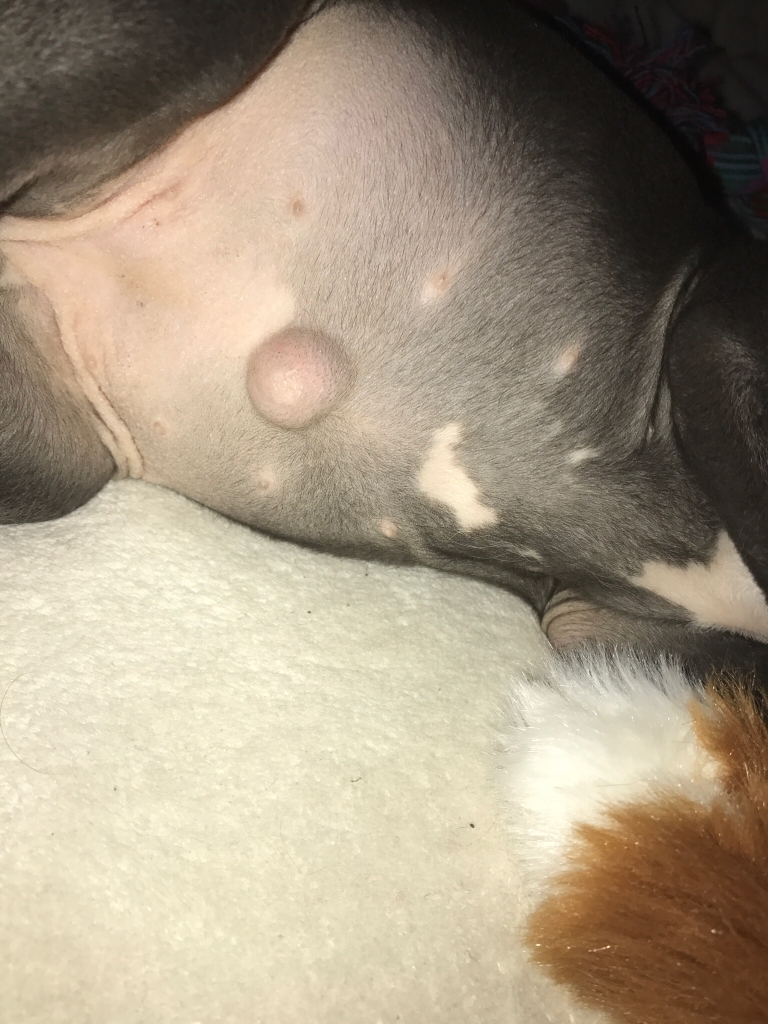
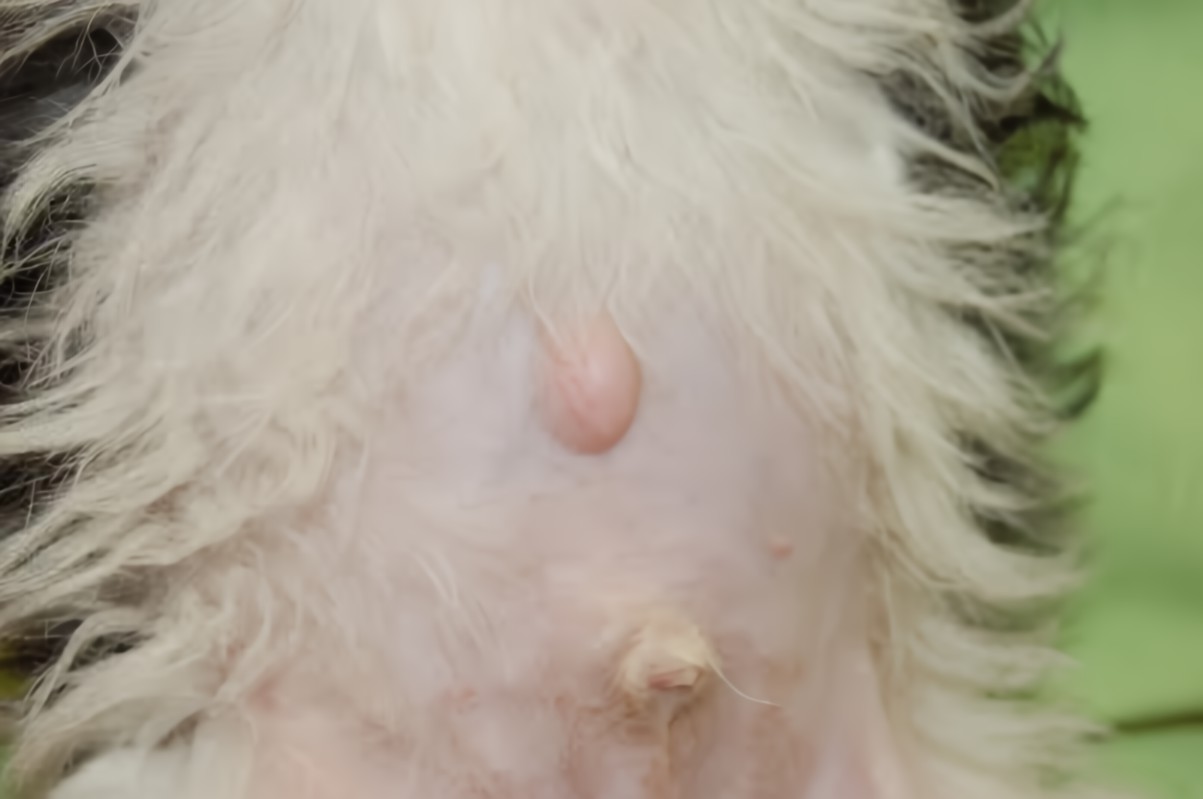
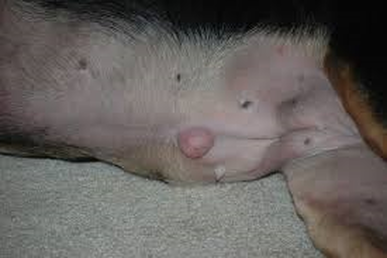


When there is a significant size to the hernia or it is a complicated hernia, a midline issue (genetic) should be considered/researched in the pedigree.
The hernia will be classified as reducible or non-reducible. Reducible means that whatever is protruding (usually fat) can be pushed back in. Non-reducible means that it cannot easily be pushed back in. This could indicate at least partial obstruction or adhesion of the herniated contents to the opening and should be brought to your veterinarian’s attention. When the hernia is significant enough, organs can get pushed through or strangled in the opening.

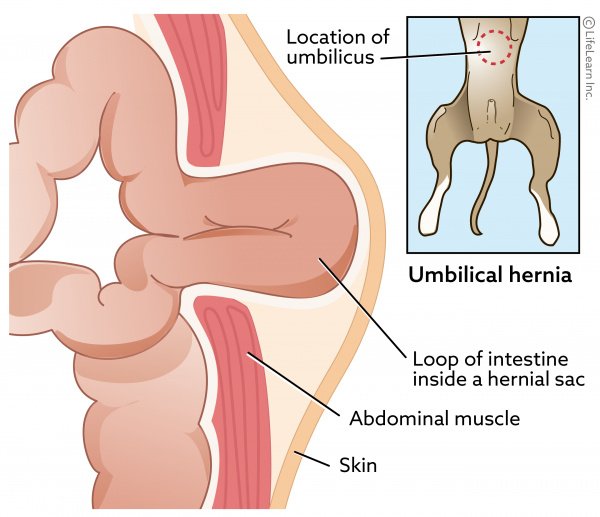
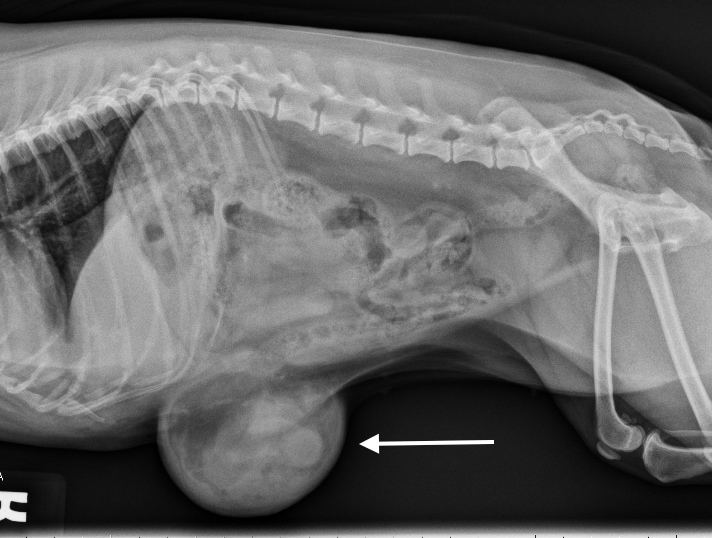
Inguinal Hernia
Inguinal hernias are hernias in the groin area. They can occur in many animals including dogs, cats, humans. An inguinal hernia is the result of an opening in the muscle wall in the groin area. An inguinal hernia can be either complicated or uncomplicated. In a complicated hernia, organs/contents of the abdominal cavity have protruded through the opening and become entrapped.
With an uncomplicated inguinal hernia, much like with the umbilical hernia, there will be a soft swelling in the groin area (this may be on unilateral or bilateral).
With a complicated hernia, the swelling may become painful as well as warm to the touch. There can also be vomiting, lack of appetite, depression, frequent or hematuria (bloody urine).
Inguinal hernias may be congenital (present at birth) or acquired (not present at birth but develop later). In congenital hernias, careful review of the pedigree should be given as an inguinal hernia can be hereditary. Common causes of a dog developing an inguinal hernia include pregnancy, obesity and trauma.
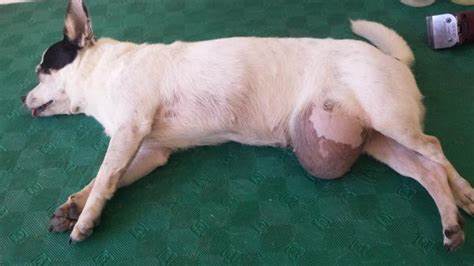
Diaphragmatic Hernia
The diaphragm is a muscle wall that separates the abdomen from the chest cavity. As the name implies, a diaphragmatic hernia is a rupture in this muscle wall. Much like inguinal hernias, diaphragmatic hernias (also called diaphragmatic ruptures) can either be congenital or acquired. A peritoneal-pericardial duaphragmatic hernia (PPDH) is caused by a defect in development of the diaphragm in the fetus. PPDH is congenital and, if present, the affected animal should not be bred as this can be genetic. Two breeds of dogs known to have a genetic predisposition to this are Cocker Spaniels and Weimeraners.
The most common cause of an acquired diaphragmatic hernia is blunt force trauma the abdomen such as a motor vehicle accident or a fall from a great height. As in other hernias, the biggest concern is for contents of the abdominal cavity to end up somewhere else. If abdominal contents (stomach, liver, intestines, etc.) encroach into the chest cavity, they can put pressure on the lungs and cause respiratory distress (trouble breathing) or irritate the heart muscle and cause abnormal heart rhythms. Fluid can also leak from the abdomen into the chest cavity causing further complications.
Symptoms will be dependent on the severity of the hernia. In mild cases, there may be little discernible clinical symptoms. The owner may notice mild difficulty breathing when the dog is exercising or there may be mild gastrointestinal upset. In acute or severe cases, there may be arrhythmia (abnormal heart rhythm), respiratory distress (difficulty breathing), or signs of systemic shock. The abdominal cavity may also fill empty when palpated (felt) as the contents will have been displaced.
Perineal Hernia
A perineal hernia occurs when the muscles of the pelvic diaphragm fail. Perineal hernias are typically painful. Perineal hernias are more common in males than females and more common in elderly dogs.
In addition to a usually obvious protrusion, there may also be inability to control the bowels.
Possible causes of a perineal hernia include atrophy of the pelvis, colorectal disease, prostatic disease or cancer.

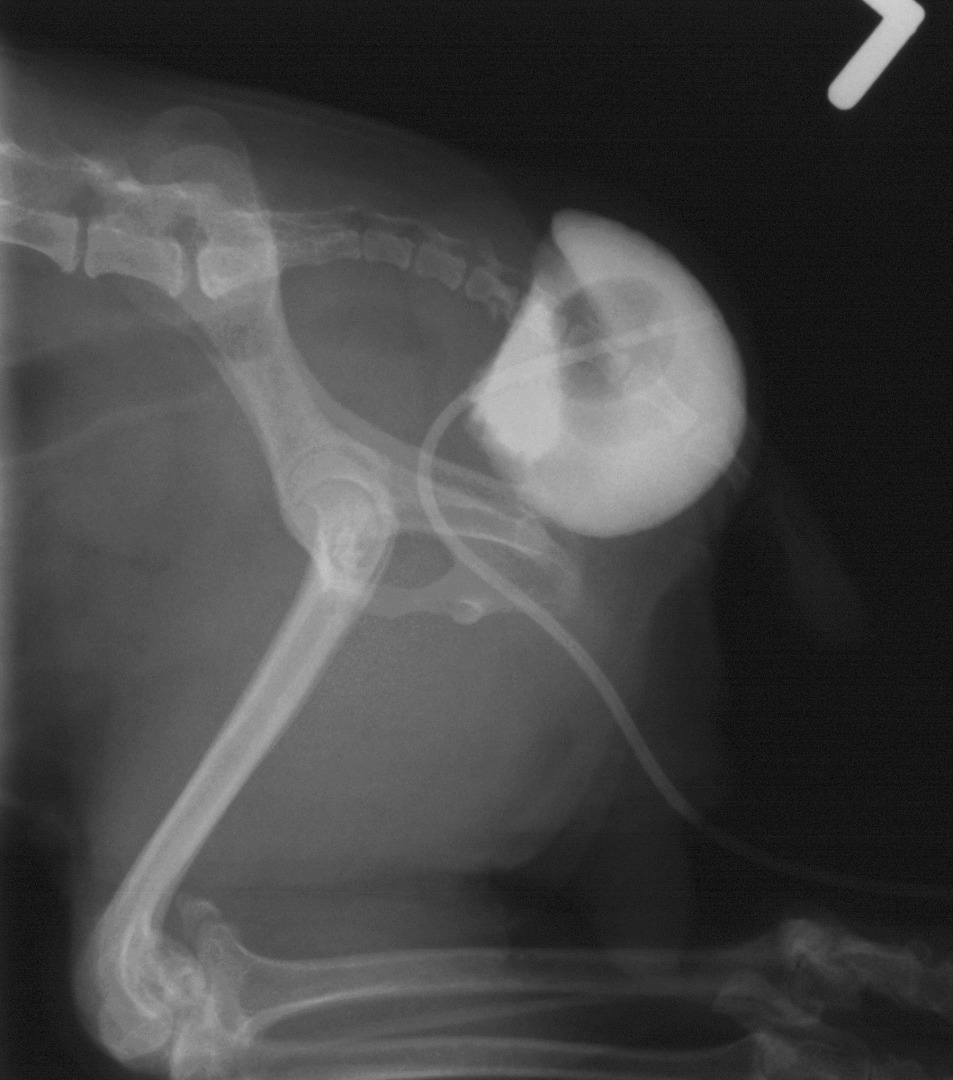

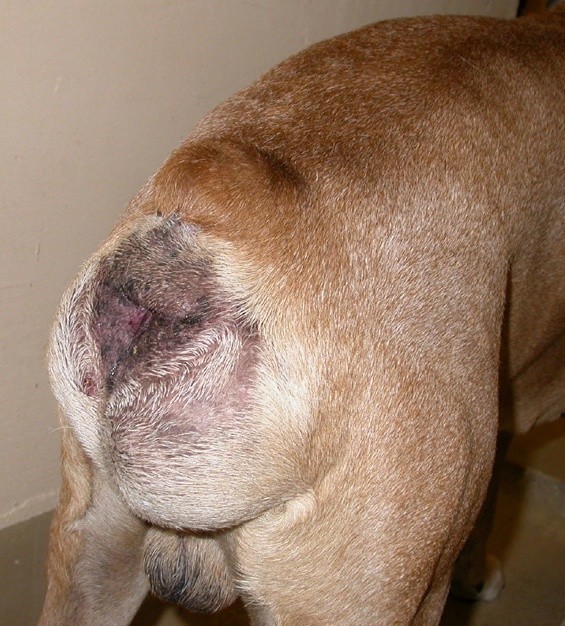
Hiatal Hernia
A hiatal hernia is passage of the upper part of the stomach through the narrow opening of the diaphragm meant for the esophagus. Although most hernias are caused when there is a tear or malformation of an abdominal or muscle wall, with a hiatal hernia, the opening is supposed to be there (it is the opening for the esophagus.) A hiatal hernia can be congenital or acquired (due to trauma- stab wounds, surgery, etc). If the hiatal hernia is large enough, it may need surgical repair.
